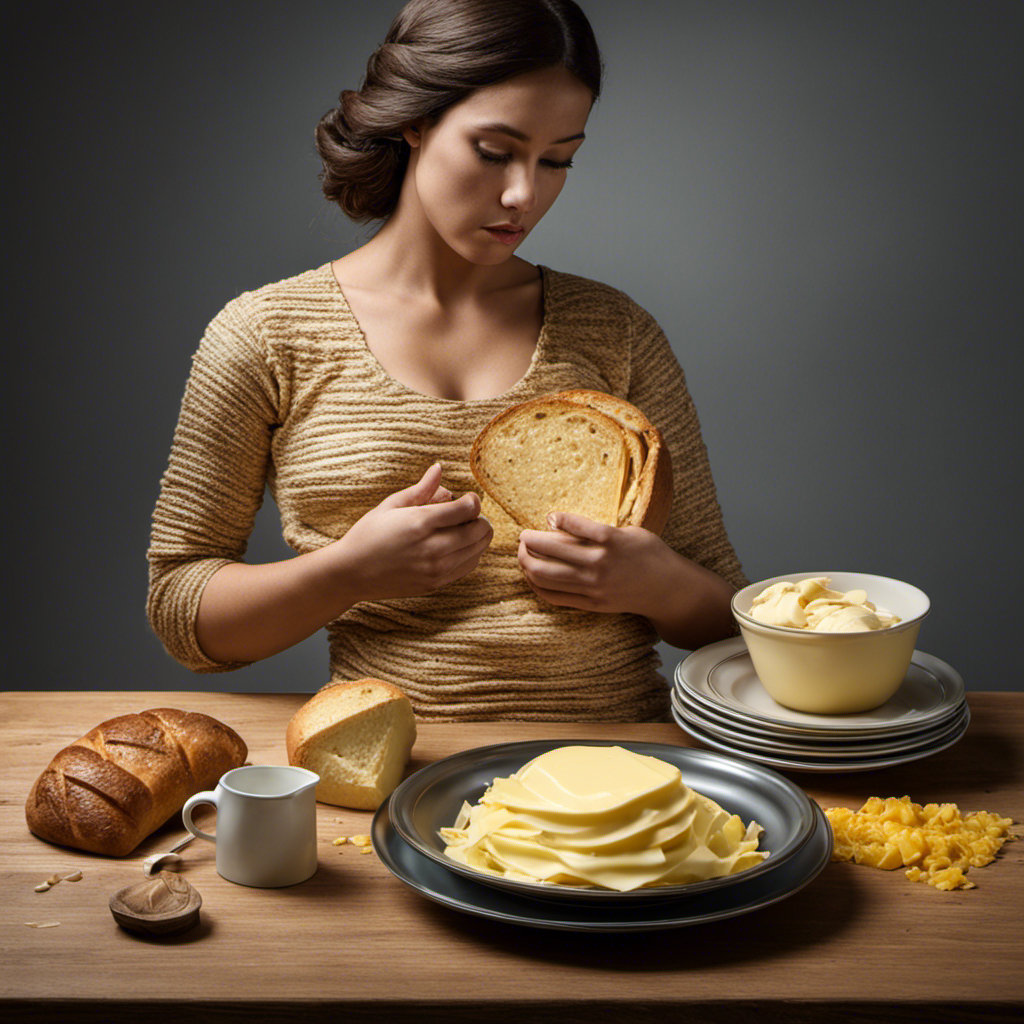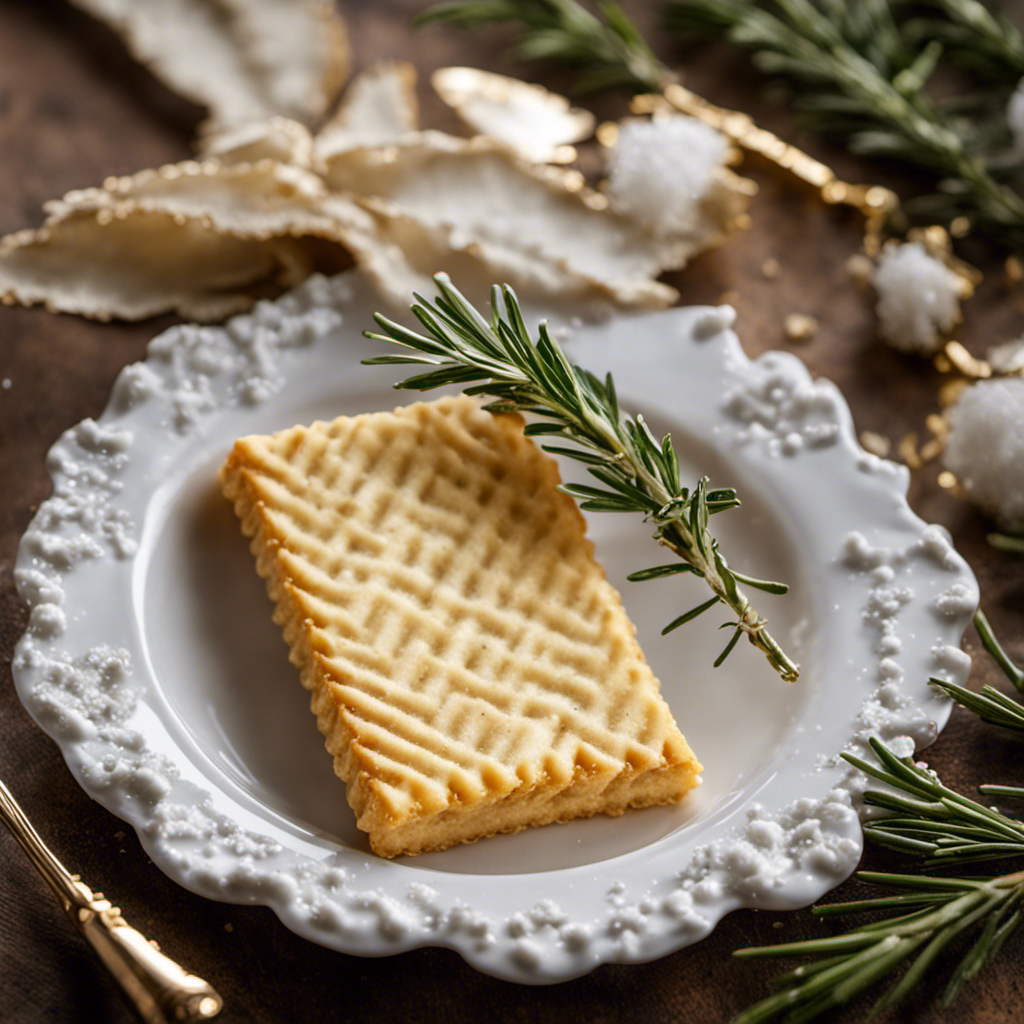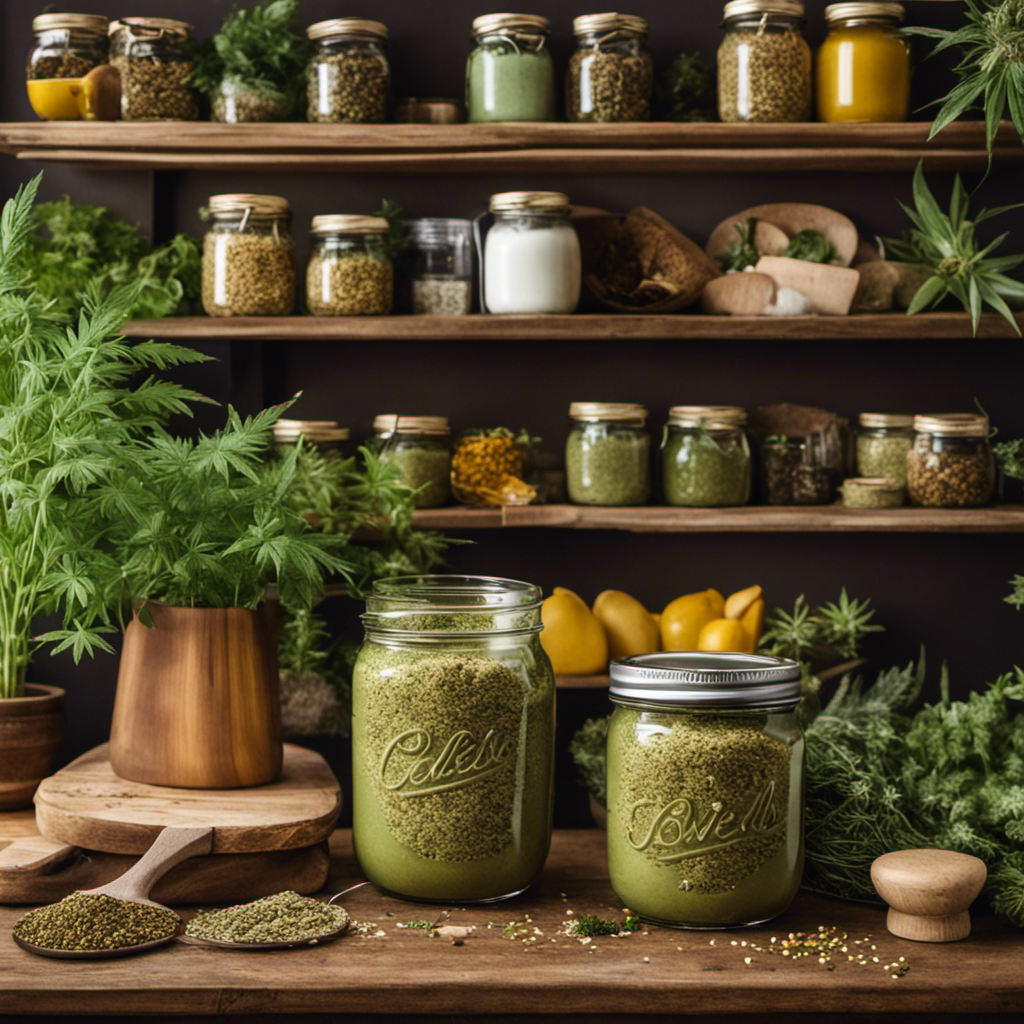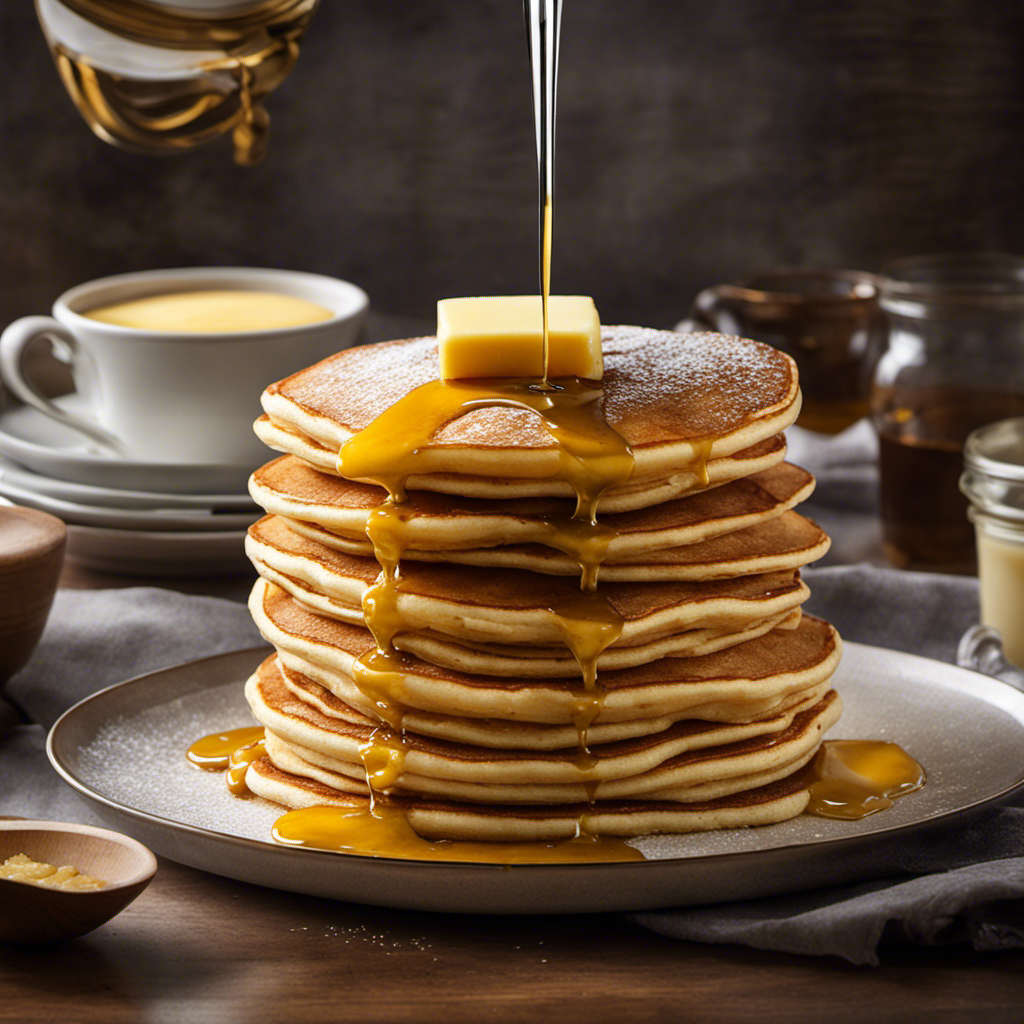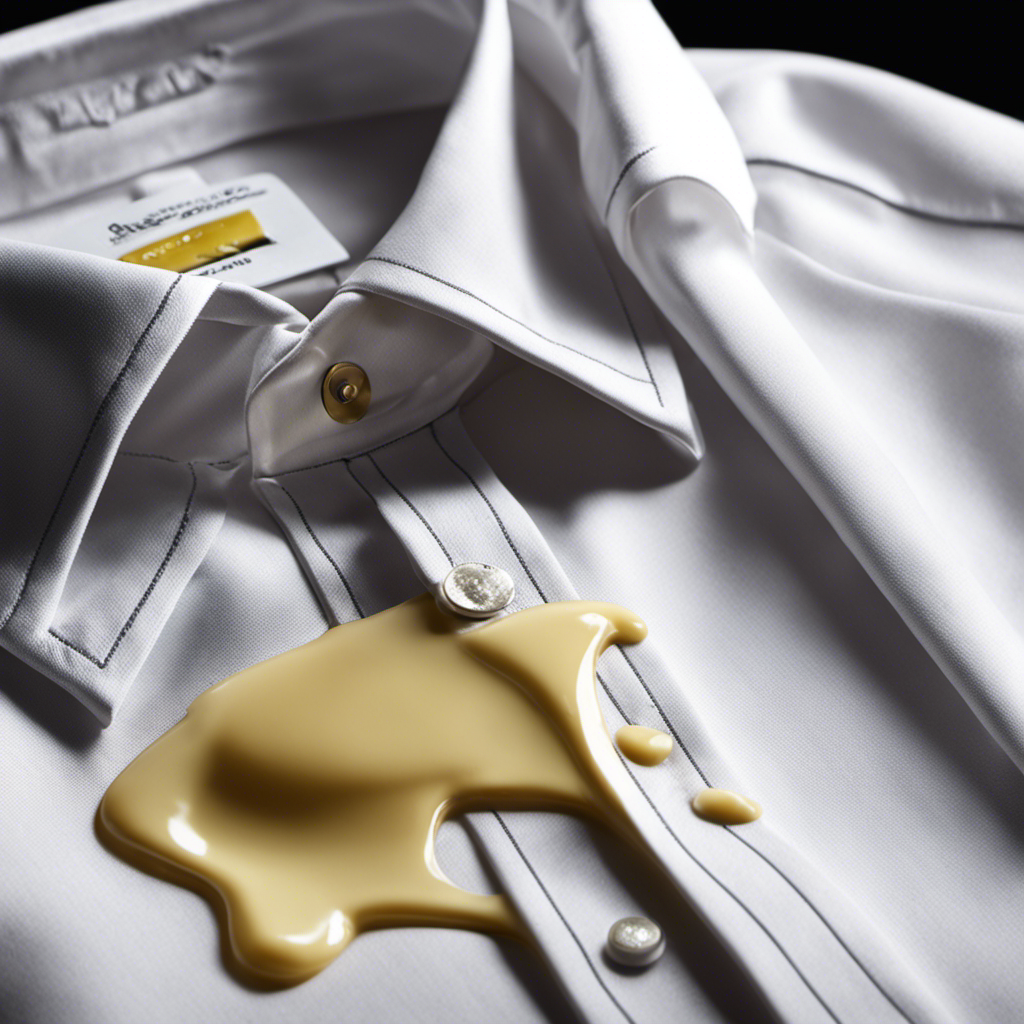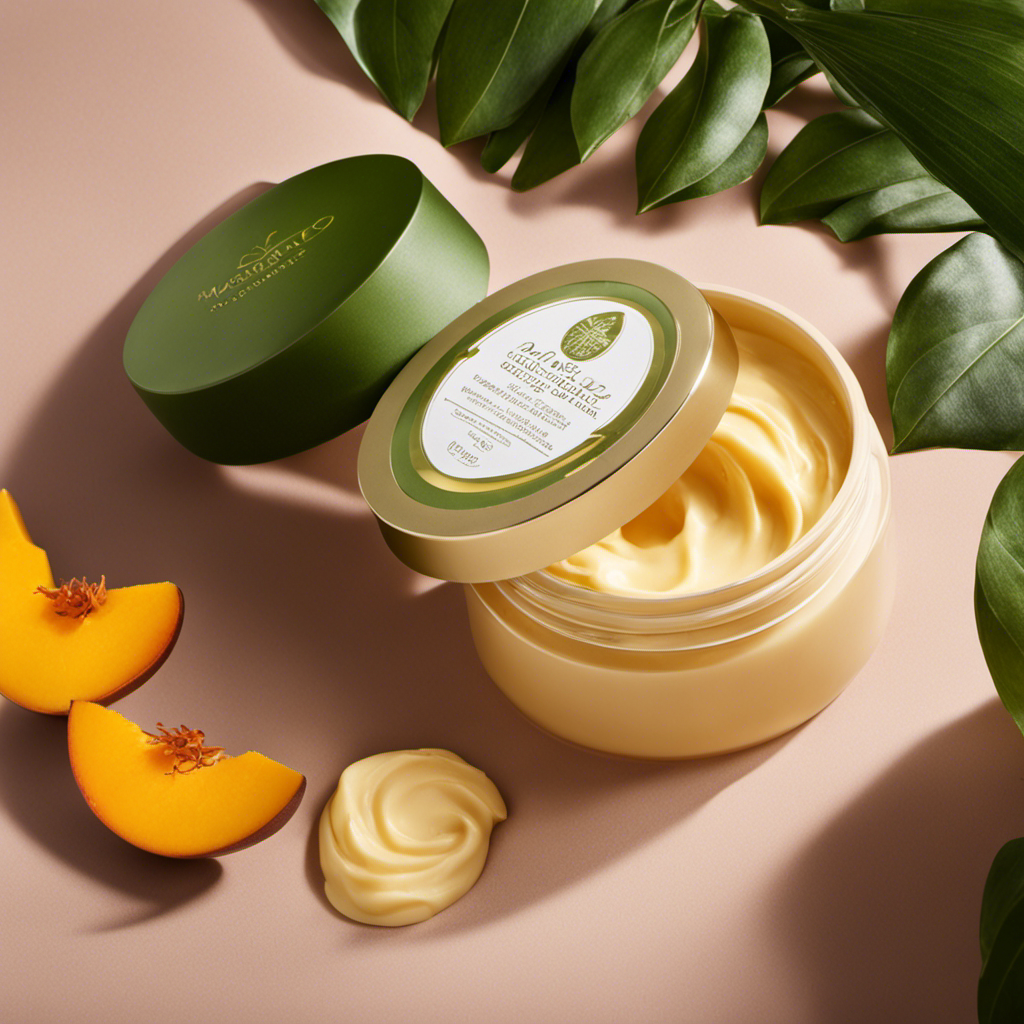I have once again succumbed to the temptation and ended up consuming an excessive quantity of butter. At this point, I am unsure of what steps to take next.
But fret not, because I’m here to provide you with some helpful tips and strategies to deal with this butter-induced predicament.
From understanding the effects of excessive butter consumption to balancing your diet and boosting your metabolism, this article will guide you through the aftermath of a butter binge.
So, let’s dive in and find out how to handle this situation with grace and a touch of irony.
Key Takeaways
- Excessive butter consumption can increase the risk of heart disease and raise cholesterol levels.
- Symptoms of consuming too much butter include bloating, abdominal pain, diarrhea, weight gain, and digestive issues.
- Drinking enough water, sipping on warm water or herbal teas, and infusing water with lemon, cucumber, or mint can help aid digestion after consuming too much butter.
- Balancing diet, incorporating healthier fats like avocados and nuts, and maintaining a healthy weight are important for preventing butter overindulgence and maintaining a healthy lifestyle.
Understanding the Effects of Excessive Butter Consumption
You might be wondering what happens when you eat too much butter. Well, excessive butter consumption can have negative effects on your health.
While butter is a tasty and popular ingredient in many dishes, it is high in saturated fats. Consuming large amounts of saturated fats can increase your risk of heart disease, raise your cholesterol levels, and contribute to weight gain.
Thankfully, there are butter alternatives and substitutes available that can provide a healthier option. Margarine, for example, is a common butter substitute made from vegetable oils. It contains less saturated fat and can be a good alternative for those who want to reduce their butter intake.
Now that we understand the effects of excessive butter consumption, let’s move on to identifying the symptoms of butter overindulgence.
Identifying the Symptoms of Butter Overindulgence
Butter-induced tummy aches can be uncomfortable and may occur when we consume excessive amounts of this rich dairy product. It is important to recognize the signs of excessive butter consumption to prevent potential digestive issues.
Some common symptoms of butter overload may include bloating, abdominal pain, and diarrhea.
Butter-Induced Tummy Ache
Eating too much butter can cause a tummy ache. If you’re experiencing discomfort after indulging in butter, there are a few things you can do.
One option is to explore butter alternatives. There are various spreads available that mimic the taste and texture of butter, but with lower fat content.
Another approach is to support your digestion by incorporating digestive enzymes into your diet. These enzymes can help break down the fats in butter more effectively, reducing the chances of experiencing digestive issues.
However, it’s important to note that excessive butter consumption can lead to more serious symptoms beyond just a tummy ache. So, let’s explore the signs of excessive butter intake and how to address them.
Signs of Excessive Butter
If experiencing discomfort after indulging in butter, one may notice signs of excessive butter consumption. Consuming too much butter can have detrimental effects on your health.
One of the most obvious signs of excessive butter consumption is weight gain. Butter is high in calories and fat, and consuming it in excess can lead to an increase in body weight.
Another sign to watch out for is an increase in cholesterol levels. Butter contains saturated fats, which can raise LDL (bad) cholesterol levels and increase the risk of heart disease.
Additionally, consuming excessive amounts of butter can also contribute to digestive issues such as diarrhea and bloating.
It is important to be mindful of your butter intake and opt for healthier alternatives to reduce the health risks associated with excessive butter consumption.
Butter Overload Symptoms?
Experiencing discomfort after indulging in butter can lead to symptoms of butter overload. Consuming excessive amounts of butter can have negative effects on our health, causing various symptoms and posing risks to our well-being. Here are some common butter overdose symptoms and the potential health risks associated with excessive butter intake:
| Butter Overdose Symptoms | Health Risks of Excessive Butter Intake |
|---|---|
| Nausea | Increased risk of heart disease |
| Abdominal pain | Weight gain |
| Diarrhea | Elevated cholesterol levels |
| Bloating | Increased risk of obesity |
| Indigestion | Inflammation |
Experiencing these symptoms indicates that you may have consumed too much butter. It is important to take immediate steps to alleviate any discomfort and minimize potential health risks.
Steps to Take Immediately After Consuming Too Much Butter
When it comes to digestion, hydration plays a vital role in keeping things running smoothly. Drinking enough water helps to break down food and move it through the digestive system efficiently.
Additionally, exercise is a great way to burn calories and boost metabolism, aiding in weight management. However, it’s important to remember that moderation is key.
Finding a balance between hydration, exercise, and overall healthy habits is crucial for long-term well-being.
Hydration for Digestion
Drinking water helps with digestion after eating too much butter. It aids in breaking down the excess fat and promotes a smooth flow through the digestive system.
To improve hydration and aid digestion, consider the following tips:
- Sip on warm water: It can help relax the muscles of the digestive tract and stimulate bowel movements.
- Herbal teas: Chamomile, peppermint, or ginger tea can soothe the stomach and relieve bloating or discomfort.
- Infused water: Add slices of lemon, cucumber, or mint to your water for a refreshing twist that also aids digestion.
Hydration is one of the natural remedies that can alleviate the symptoms of consuming too much butter.
Transitioning to the next section, exercise can also play a role in burning off excess calories and promoting overall well-being.
Exercise for Calorie Burn
Regular exercise can help burn calories and promote overall well-being. Incorporating a consistent exercise routine into your daily life can aid in weight management and contribute to a healthy lifestyle. When combined with a nutritious, well-balanced meal plan, exercise becomes even more effective in achieving your health and fitness goals.
Engaging in regular physical activity increases your metabolic rate, allowing your body to burn more calories throughout the day. It also helps build lean muscle mass, which further boosts your metabolism and increases calorie burn. Additionally, exercise has been shown to improve mood, reduce stress, and enhance cognitive function.
To maximize the benefits of exercise, it is important to pair it with a healthy meal plan. Consuming nutrient-dense foods such as fruits, vegetables, whole grains, lean proteins, and healthy fats will provide the necessary fuel for your workouts and support your overall well-being. Remember to stay hydrated and listen to your body’s needs during exercise to prevent injury and optimize performance.
Moderation in Future
Now that we’ve discussed exercise for calorie burn, let’s focus on moderation in future planning.
When it comes to maintaining a healthy diet, portion control is key. Here are three tips to help you incorporate portion control into your future meals:
-
Use smaller plates: Opt for smaller plates and bowls to help control portion sizes. Studies have shown that people tend to eat less when they use smaller plates.
-
Measure your portions: Invest in measuring cups or a food scale to accurately measure your food portions. This can help you avoid overeating and ensure you’re consuming the right amount of nutrients.
-
Eat mindfully: Slow down and pay attention to your body’s hunger and fullness cues. This will help you eat until you’re satisfied, rather than overeating.
Balancing Your Diet to Counteract the Butter Intake
To balance out the butter intake, I could try incorporating more vegetables and lean proteins into my meals. Balancing my diet is important to ensure that I am getting the necessary nutrients and maintaining a healthy weight.
Vegetables are rich in vitamins, minerals, and fiber, while lean proteins provide essential amino acids for muscle growth and repair. By including these foods, I can counteract the effects of consuming too much butter.
Additionally, it’s important to focus on incorporating healthy fats into my diet. These include sources like avocados, nuts, and olive oil, which provide essential fatty acids that support heart health and brain function.
Incorporating Healthy Fats to Offset the Butter Overload
In order to offset the butter overload, I can incorporate healthier fats into my diet. These alternatives provide essential nutrients while promoting a balanced intake of fats.
Avocados are rich in monounsaturated fats, which can help lower bad cholesterol levels.
Nuts, like almonds and walnuts, contain healthy fats that support heart health and provide a good source of protein.
Olive oil, when used in moderation, can contribute to a healthy diet by providing monounsaturated fats and antioxidants.
Additionally, staying hydrated is important for digestion, as it helps break down food and absorb nutrients efficiently.
Exercise is another effective way to burn calories and support overall health.
Effective Ways to Boost Your Metabolism After a Butter Binge
If you’re looking to boost your metabolism after indulging in butter, incorporating high-intensity interval training into your fitness routine can be effective. HIIT involves short bursts of intense exercise followed by brief recovery periods, which has been shown to increase metabolic rate and burn calories even after the workout is over. In addition to exercise, focusing on digestive health can also help boost metabolism. Eating a balanced diet with plenty of fiber can aid in digestion and keep your metabolism running smoothly. Foods like fruits, vegetables, whole grains, and legumes are all great sources of fiber. Drinking plenty of water and staying hydrated is also important for optimal digestion. Incorporating these habits into your routine can help boost your metabolism and support overall digestive health.
| Boosting Metabolism | Digestive Health |
|---|---|
| High-intensity interval training | Eating a balanced diet with fiber |
| Increasing metabolic rate | Drinking plenty of water |
| Burning calories | Focusing on hydration |
| Exercise routine | Supporting digestion |
| Improved overall health | Optimal digestive function |
Long-Term Strategies for Preventing Butter Overindulgence
One effective long-term strategy for preventing butter overindulgence is to incorporate healthier fats and oils into your cooking and meal preparation. By making this simple change, you can still enjoy flavorful dishes while reducing your intake of saturated fats.
Here are three key ways to incorporate healthier fats and oils:
-
Use olive oil or avocado oil instead of butter when sautéing vegetables or cooking meats. These oils are rich in monounsaturated fats, which have been shown to have numerous health benefits.
-
Replace butter with nut butters, such as almond or cashew butter, for spreading on toast or adding to recipes. Nut butters provide a good source of healthy fats and can add a delicious flavor to your meals.
-
Opt for Greek yogurt or mashed avocado instead of butter in baking recipes. These alternatives can help balance the macros in your baked goods and provide a creamy texture without the added saturated fat.
Frequently Asked Questions
Can I Exercise After Consuming Too Much Butter?
Yes, you can still exercise after consuming too much butter. Engaging in exercises to burn off excess butter can help mitigate the impact of butter overload on weight gain.
How Long Does It Take for the Symptoms of Butter Overindulgence to Subside?
How long it takes for symptoms of butter overindulgence to subside depends on the individual’s metabolism. Exercise can help speed up the process. It’s important to listen to your body and make healthier choices going forward.
Can I Still Enjoy Butter in Moderation After Experiencing Butter Overload?
Yes, it is possible to still enjoy butter in moderation after experiencing butter overload. However, it is important to listen to your body’s signals and consider butter alternatives to manage cravings.
What Are Some Healthy Fats That I Can Incorporate Into My Diet to Counteract the Effects of Excessive Butter Consumption?
To counteract the effects of excessive butter consumption, incorporating healthy fat alternatives into my diet is beneficial. These alternatives provide essential nutrients and can help reduce the negative impacts of consuming too much butter.
Are There Any Specific Foods or Drinks That Can Help Boost My Metabolism After a Butter Binge?
To boost metabolism after indulging in butter, incorporate foods like lean proteins, green tea, and spicy peppers. Additionally, try replacing excessive butter consumption with healthier fats like avocados and olive oil to maintain a balanced diet.
Conclusion
In conclusion, excessive butter consumption can have negative effects on our health, but there are steps we can take to mitigate the damage.
It is important to recognize the symptoms of butter overindulgence and take immediate action, such as increasing physical activity and incorporating healthy fats into our diet.
Interestingly, a study conducted by the American Heart Association found that consuming too much saturated fat, like that found in butter, can increase the risk of heart disease by 17%.
By being mindful of our butter intake and making healthier choices, we can prevent butter overindulgence and maintain a balanced diet.
